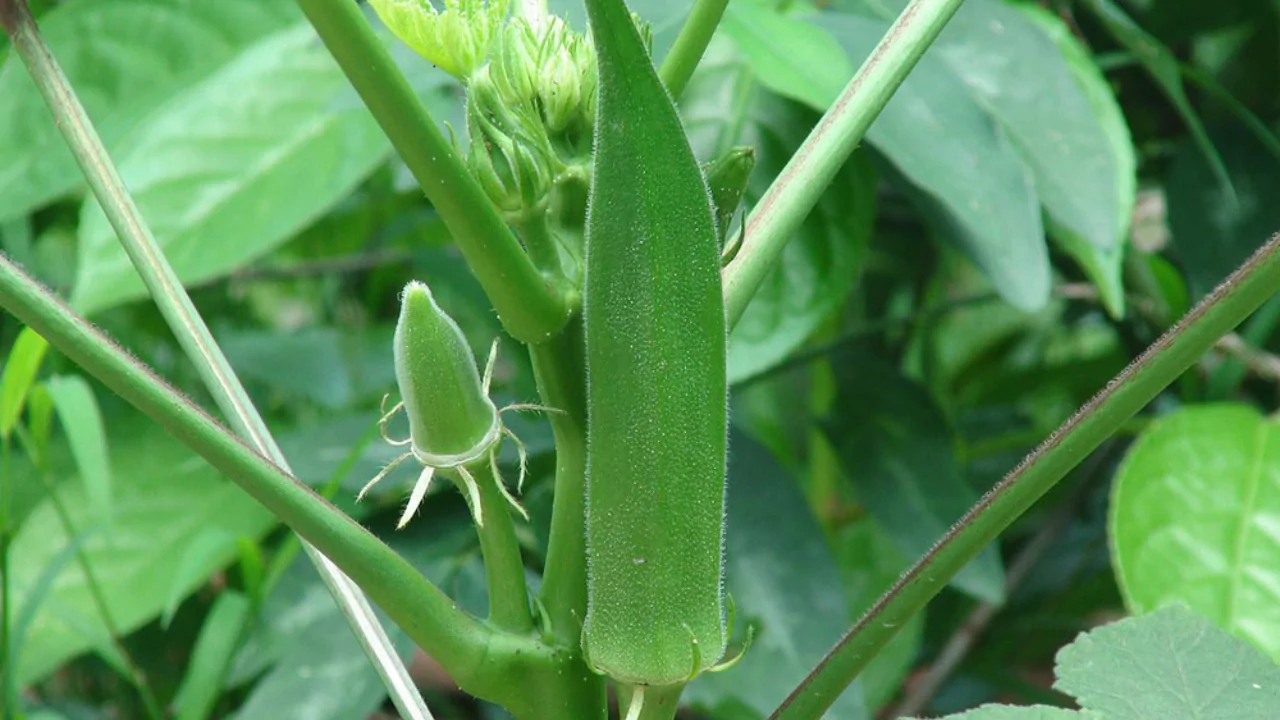
QUESTION: Is it possible to grow okra in a pot? Are okra too large to be grown in a container?
ANSWER: Okra, just like every other vegetable, does well with container gardening. To start growing okra in pots or containers, choose a large pot made from any material.
A minimum of three gallons is good, but a five gallon pot that is ten to twelve inches deep and with similar diameter is ideal for a single plant. If using bigger pots, then more than one plant can be grown in it.
Black colored containers are the best since they absorb heat which warms up the soil, and okra appreciates this.
When selecting seeds, find a variety of dwarf okra that does not grow taller than five feet. While any variety of okra can be grown in a container, dwarf varieties are better. If you live in regions with shorter summers, then select a fast maturing variety.
You can start sowing seeds when temperatures consistently exceed 55–60°F and there are no frosts expected. If you live in the subtropical or tropical regions, or in USDA zones 9-11, you can grow okra year-round. Since okra has a taproot, it is not easily transplanted; therefore, it is best to sow seeds directly into your containers. In each pot, sow two or three okra seeds at a depth of half to one inch.
Water the pots with a can or a shower setting on gentle spray. Place the containers in warm, bright spots. The soil should remain moist until germination, which occurs about five to ten days after sowing. Warmer temperatures accelerate germination.
After your seedlings have emerged, choose a location that offers unfiltered sunlight for at least five to six hours daily. Okra, similar to other prolific southern vegetables, like peppers and tomatoes, thrives in areas with abundant sunlight.
The potting soil for okra should be loamy, crumbly, and well-draining. Soilless potting mixes rich in organic matter work wonderfully. Alternatively, you can make these your plants more nutrient-dense by adding compost or aged-manure to the potting soil.
Maintain a slightly moist level of the potting soil (or soilless medium) and water it at regular intervals to maintain uniform moisture within the soil. Soil moisture is particularly important during the critical period of growth, from the start of the flowering phase till the end of production.
Temperature is the most critical factor in the cultivation of okra, as it is highly sensitive to cold. Given the presence of the right conditions, the plant can grow at temperatures above 50 degrees F, but to bear dome flowers and fruit abundantly, heat of 75 to 95 degrees is ripe. While okra plants tolerate high temperatures very well, cooler temperatures can result in failure to produce pods.
To fertilize, mix manure into the soil to supply the plants with nutrients and side dress them occasionally with this fertilizer as well. You may provide the plants a boost during planting by adding balanced fertilizer which may aid in faster growth.
When the plant reaches six inches in height, add a dose of balanced fertilizer again. If the soil is rich in nitrogen, adding balanced fertilizer may spoil the conditions tipping the scale towards vegetative growth at the instead of fruiting, so do your best to keep the balance by monitoring your pH levels. Later on in the growing season, feed the plant with lower nitrogen blends instead of balanced blends like 5-10-15 or 6-12-12.
Okra plants do not need to be pollinated since they self-pollinate. Additionally, if you choose a dwarf variety suitable for containers, you do not have to worry about pinching or topping the plant since it will not exceed five feet in height.
Furthermore, these types of plants are often infected with fusarium wilt and are vulnerable to nematodes, aphids, and whiteflies. However, these issues tend to arise more in large-scale okra production and should be manageable in small container gardens.
Okra flowers about two months after planting, with fruits beginning to develop approximately 5 to 7 days later. Crops need to be collected often, as the pods need to be harvested when tender; otherwise, they will become too fibrous and difficult to eat.
It is best to harvest when the pods are between 3 to 5 inches long. To determine if any fruit is tender enough to be picked, gently bend the tip and if it snaps off easily, it’s ready for harvest.